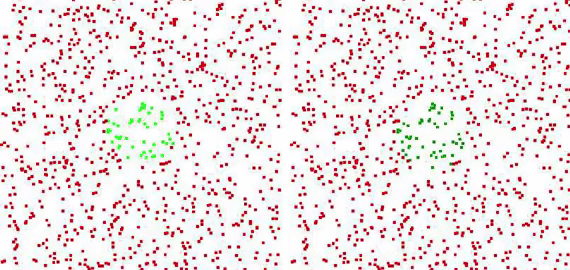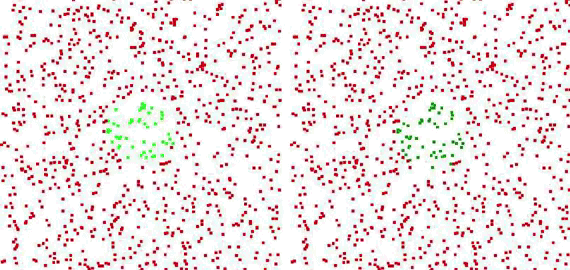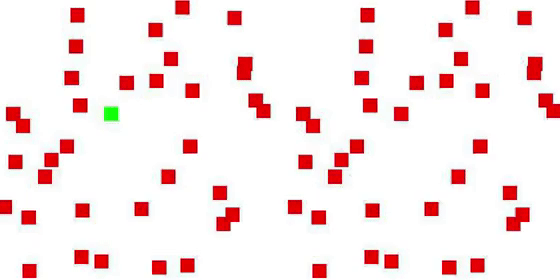Infant Behavior and Development, (submitted)
Infantsf perception of subjective contours from apparent motion.
*Okamura H.** Kanazawa S. & * Yamaguchi M.K.
* Department of psychology, Chuo University, Tokyo, JAPAN
** Department of psychology, Shukutoku University, Chiba, JAPAN
|
Abstract We examined infantsf perception of subjective contours in Subjective-Contour-from-Apparent-Motion (SCAM) stimuli (e.g., Cicerone et al., 1995) using the preferential looking technique. The SCAM stimulus is composed of random dots which are assigned two different colors. The dots in circular region assigned one color keeping the locations unchanged. In the SCAM stimulus, adults can perceive subjective color spreading and subjective contours. In the present study, we conducted two experiments by using this type of SCAM stimulus. A total of 36 3- to 8- month-olds participated. In experiment 1, we presented two stimuli to the infants side by side: a SCAM stimulus consisting of different luminance, and a non-SCAM stimulus consisting of isoluminance dots. The results indicated that the 5- to 8- month-olds showed preference for the SCAM stimuli. In experiment 2 and 3, we confirmed that the infantsf preference for the SCAM stimulus was not generated by the local difference in the luminance of the dots and the color change in dots but by the subjective contours. These results suggest that 5- to 8- month-olds were able to perceive subjective contours in the SCAM stimuli. |
Experiment 1

|
--SCAM induced the perception of a subjective contour around the green circular region (Fig1, a). Non-SCAM produced no subjective contour (Fig1, b). Only 5- to 8- month-olds discriminated between these two stimuli significantly.
Experiment 2

|
--Single-SCAM was a single frame of the SCAM (Fig2, a). Single-non-SCAM was a single frame of the non-SCAM (Fig2, b). These stimuli had same condition in the luminance as the stimuli in Experiment 1. However, both stimuli produced no subjective contour. 3- to 8- month-olds showed no significant discrimination between these two stimuli These results indicated that 3- to 8- month-old infants did not show a preference for the local difference of luminance, which suggests that the preference shown in experiment 1 was not for the local difference of luminance, but for the subjective contour itself.
Experiment 3

|
--Sparse-SCAM consisted of the fewer dots than the SCAM (Fig3, a). Sparse-non-SCAM consisted of the fewer dots than the non-SCAM (Fig3, b). These stimuli had same condition in the color change in dots as the stimuli in Experiment 1. However, both stimuli produced no subjective contour. 5- to 8- month-olds discriminated between these two stimuli significantly. However, the preference for the sparse-SCAM was significantly lower than the preference for the SCAM. This suggests that the preference for the SCAM shown in experiment 1 was not only for the color change in dots in the SCAM, but also for the subjective contour.